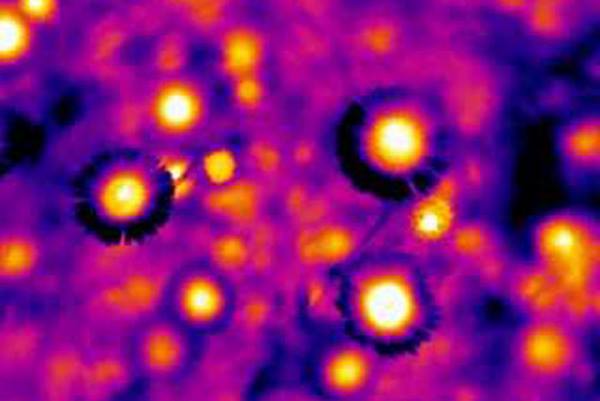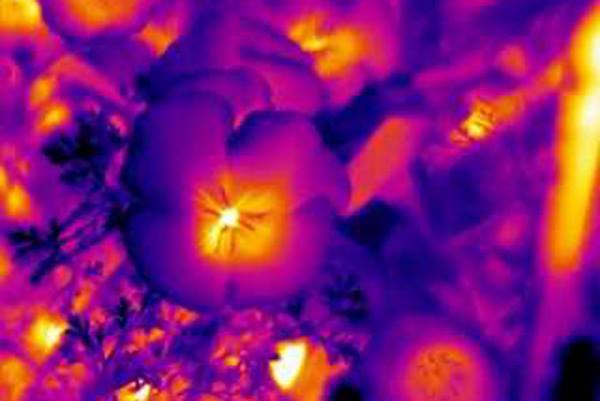Bees use invisible heat patterns to choose flowers. A new study, led by scientists from the University of Bristol, has found that a wide range of flowers produce not only visible cues and smells, but also invisible calls like heat.
Bees use invisible heat patterns to choose flowers. A new study, led by scientists from the University of Bristol, found that a wide range of flowers produce not only visible cues and smells, but also invisible calls like heat.
In the hidden world of flower-pollinator interactions, heat also acts in the form of a sensory signal used by flowers in a certain sense to get noticed, to signal their presence and other information to pollinating insects.
For the study, scientists from the University of Bristol looked at several flowers, some of which many common in gardens, such as poppies and daisies, discovering that each of them had complexes heat patterns transmitted through the petals, which traced the color differences perceived by our eyes.
On average, these patterns were 4-5 ° C warmer than the rest of the flower, and at times they could reach over 11 ° C.
To demonstrate how bees are attracted to flowers, Bristol scientists made artificial flowers that copied these heat patterns, not including the corresponding color patterns.
Even though artificial flowers look identical to human eyes to the point that they cannot be distinguished from natural ones, bumblebees can see beyond. The latter visit a wide range of different flowers and are able to use the patterns to distinguish them and to know in advance what they offer.

The study's lead author, Dr Heather Whitney, of the University of Bristol's School of Biological Sciences, has explained:
“Having more signals on flowers is known to improve bees' ability to pollinate efficiently, thus maximizing the amount of food they can have back to support the rest of their colony. Climate change could have unexpected unexpected impacts on the interactions between flowers and bees, disrupting these hidden heat patterns. "

READ also:
- Petals produce a striking blue halo to attract bees (and only visible to insects)
- The beetle orientates itself by looking at the Milky Way
The study was published in eLife.
Francesca Mancuso


























